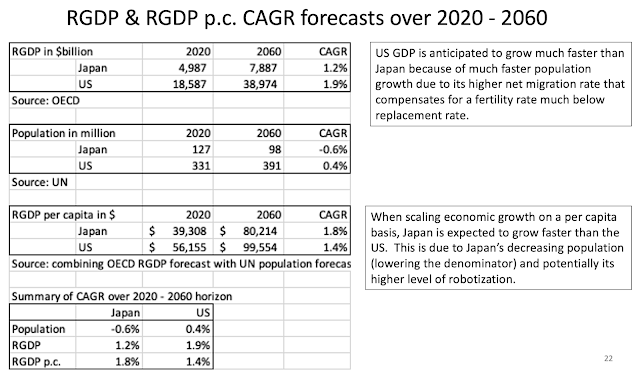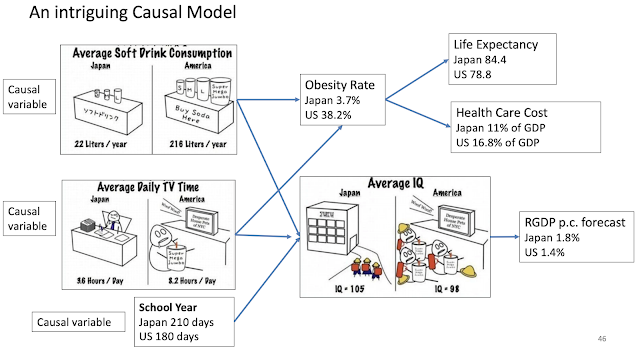Treasury Yield - TIPS Yield = Inflation Expectation
The above basic equation allows to derive long term Inflation Expectation from the bond market. By looking at the spread between Treasuries and TIPS of identical maturities, we can derive inflation expectation over a 5 year, 7 year, and 10 year horizon.
The TIPS data is unfortunately very limited and starts only in 2003. However, given that we deal with monthly observations the data is still associated with numerous data points.
So back in 2003, we could derive annualized 5 year, 7 year, and 10 year inflation expectations by looking at the spread between the matching Treasuries and TIPS.
In 2003, we derived annualized 5 year expectation over the 2003- 2008 period. And, we compare this inflation expectation with the actual annualized 5 year inflation rate over this same 2003 - 2008 period observed in 2008. So, when we graph this data, the first observation will start in 2008.
When looking at the 7 year expectation, the framework is the same as the above. And, when we graph this data, the first observation will start in 2010. For 10 year inflation expectation, the first observation will be in 2013.
The complete study can be found at the following link:
None of the TIPS derived inflation expectations turned out into effective predictions as shown on the scatter plots below.
The scatter plots are more readily visible within the complete study. Nevertheless, at a high level these three scatter plots disclose images of near randomness. This is true whether you look at 5 year, 7 year, or 10 year horizons. In all three cases, the underlying linear regressions have a slope and an R Square close to Zero denoting near randomness and absence of any material relationship between inflation expectation and actual inflation years later.
Here is looking at the 5 year horizon.
Here is looking at the 7 year horizon.
Here is looking at the 10 year horizon.
All three graphs have a similar pattern with little relationship between inflation expectation and actual inflation. This absence of relationship was precisely diagnosed using the scatter plots and underlying linear regressions above.
When we combine the 3 sets of inflation predictions on the same graph, we can observe how bond investors reacted to the onset of the Great Recession back in 2008.
The graph above discloses that back in 2008, the spread between Treasuries and TIPS over the 5 year, 7 year, and 10 year maturities resulted in inflation prediction associated with a deep deflationary environment. We can observe that with the 3 deep negative spikes denoting negative inflation expectation over long periods of time starting back in 2008.
Back in 2008, the negative inflation expectation over the 5 year horizon kicked in 2013 (blue line);
Over the 7 year horizon it kicked in 2015 (red line); and
Over the 10 year horizon it kicked in 2018 (gray line).
Next, let's compare the combined inflation expectations as presented above vs. what happened: the actual inflation over those respective periods.
As shown above, the actual annualized inflation rates look completely different from the matching annualized inflation expectations. Within the actual data, there are no downward spike associated with a deflationary environment over several years (each monthly data point covers several years of data associated with the various maturities of the bonds: 5 year, 7 year, and 10 year).
There are considerations that the Federal Reserve (Fed) is a dominant investor in TIPS. And, therefore the Fed may have distorted the resulting inflation expectation measure. If that is the case, TIPS yields would be lower than otherwise. And, the resulting inflation expectations would be higher than otherwise. This is counter to the objective of the Fed. But, this may be an unintended consequence that the Fed has not resolved.
Looking at the data is rather ambivalent.
The 7 year and 10 year maturities are supportive of the hypothesis that the Fed may have influenced the TIPS yields downward and indirectly the inflation expectations upward. For both maturities, the inflation expectations are in average statistically significantly higher than actual inflation. However, when looking the 5 year maturity, this is not the case; as actual inflation in average has been a bit higher than inflation expectation.















































